Skiing in Art History
Artists have long captured the magic of snow. During the 19th century, when winter sports like skiing, skating, and sledding became more popular in...
Louisa Mahoney 31 January 2024
23 July 2021 min Read
It’s Tokyo Olympics! It’s time when the greatest athletes gather in one place and compete against one other. If transported to the distant past, you would see how in 776 BCE, a baker named Koroibos left the competition in the dust in the stadion race. He did it all for the glory of Zeus, the Greek God. But you could also show him the celebrated moments in the history of the Summer Olympic Games from the future and amuse him. Let the race begin.
In the late 19th century, Pierre de Coubertin (1863-1937), a French educator and historian, believed that if the Olympic Games were revived, they would encourage competition, promote peace and understanding across cultures. The event itself, the struggle to overcome one’s opponent, was more important than winning. Due to his efforts, the 1896 Summer Olympics in Athens was the first international Olympic Games held in modern history.
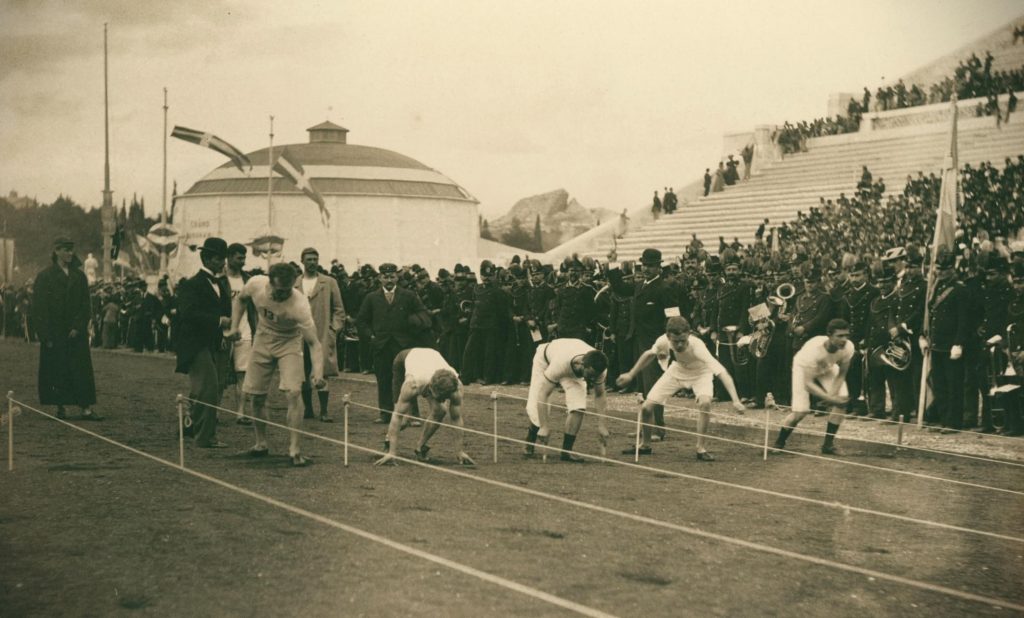
Suzanne Lenglen (1899-1938) began playing tennis at eleven years old and emerged as a child prodigy. She became the youngest major champion in history winning, the 1914 World Hard Court Championship title at age 15. Following the success, the French press called her La Divine or the Goddess, pointing at her mythical persona and perceived infallibility at tennis.
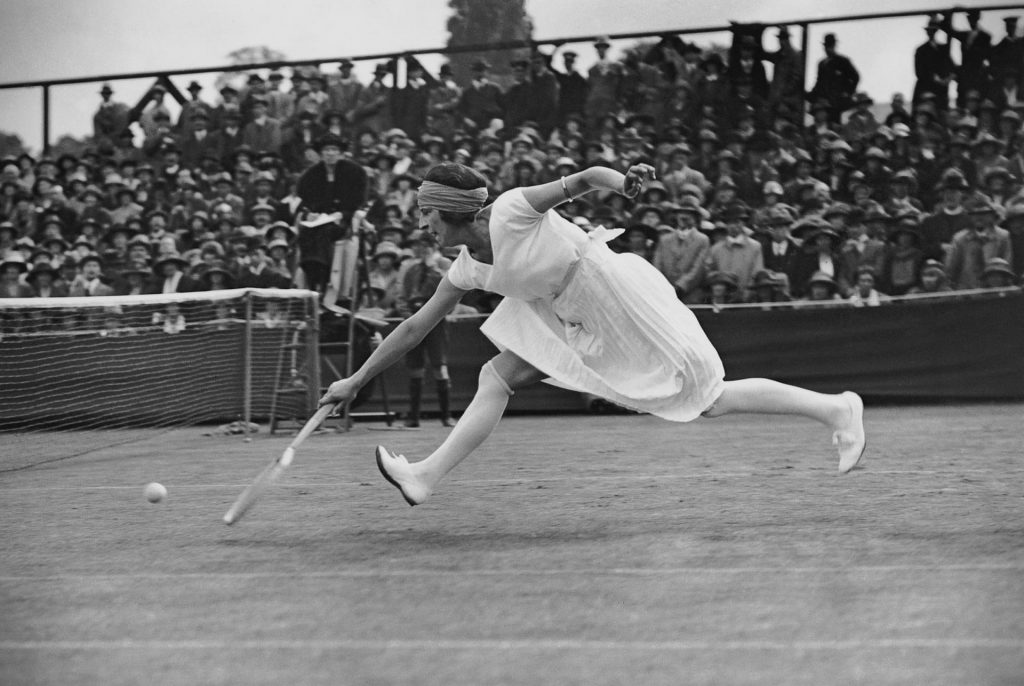
At the Summer Olympics, Lenglen won two gold medals and one bronze medal for France. She changed the sport by integrating the aggressive style of men’s tennis into the women’s game. Suzanne Lenglen broke the convention of women competing in clothing unsuitable for tennis. Indeed, it feels as though she was a ballet dancer rather than a tennis player.
In 1868, the Meiji Restoration brought extensive changes to the fabric of Japanese life. However, it was not until some 50 years later that women’s sport embraced these changes. At that time, it was unusual for girls to participate in athletics. Despite all odds, Kinue Hitomi (1907-1931) played sports, such as tennis, during her high school years. After a successful début in athletics in 1923, she enrolled in Nikaido Gymnastics School. Later that year, she won the triple jump and javelin throw with unofficial record marks.
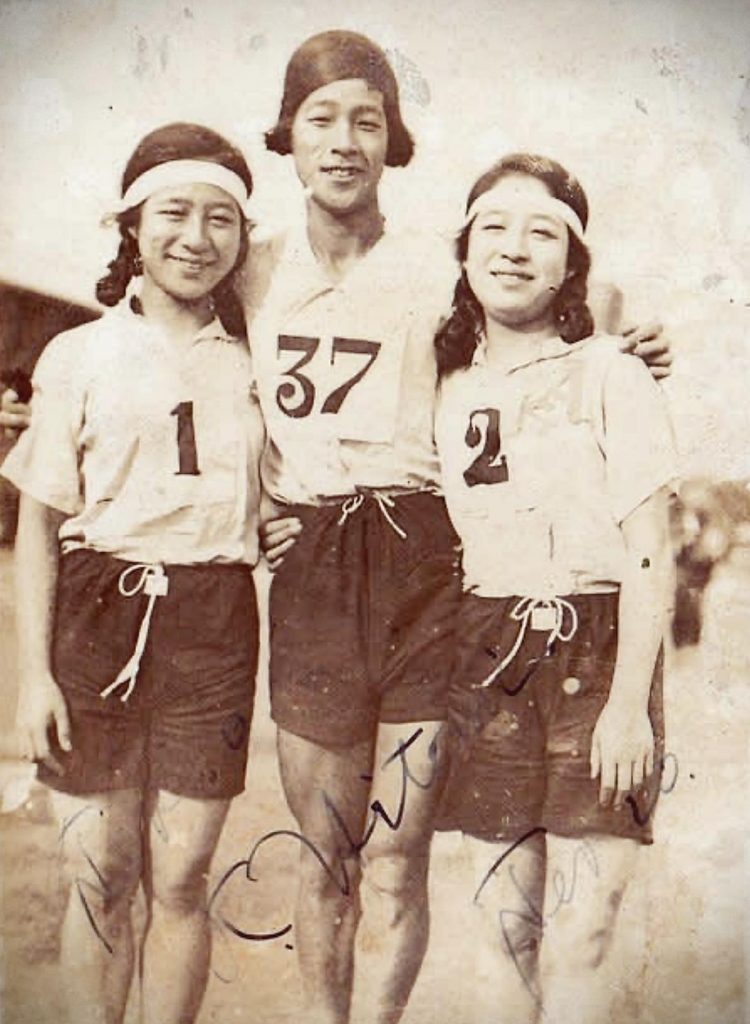
She was, moreover, the first woman to represent Japan at the Amsterdam Summer Olympics in 1928. Initially, she concentrated on the 100-meter race. However, she lost this event in the semifinals. At the last minute, she decided to join the 800-meter race. Competing in a dead heat with Lina Radke, Hitomi won a silver medal. Thus, she became the first Japanese woman to win an Olympic medal. In 1929, she continued to set records in various events. For example, she broke an official world record for the 200-meter run – 24.7 seconds in Tokyo.
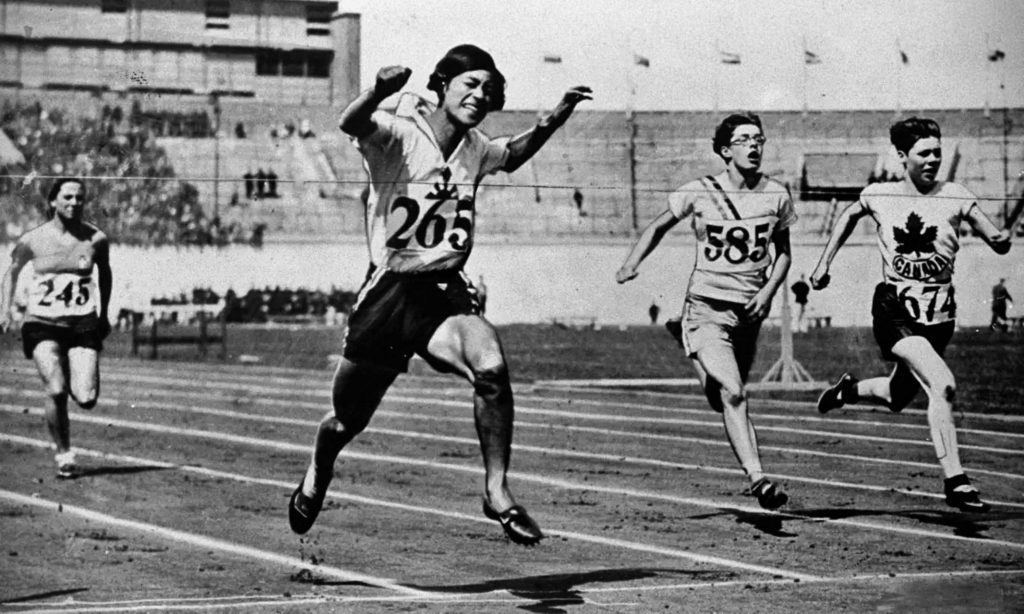
In this photograph, you can see how much effort Kinue Hitomi put into the competition. It is an inspirational moment because it is when all hard work pays off in the end. In 1930, after the Summer Olympics, she told her story; visiting schools around the country, she may have inspired many women to become athletes.
It is 1932 – we are at the Summer Olympic Games in Los Angeles. It may seem strange that some spectators switched their focus to admiring a painting at the Games. However, art was an Olympic matter of judgment between the years 1912-1948.
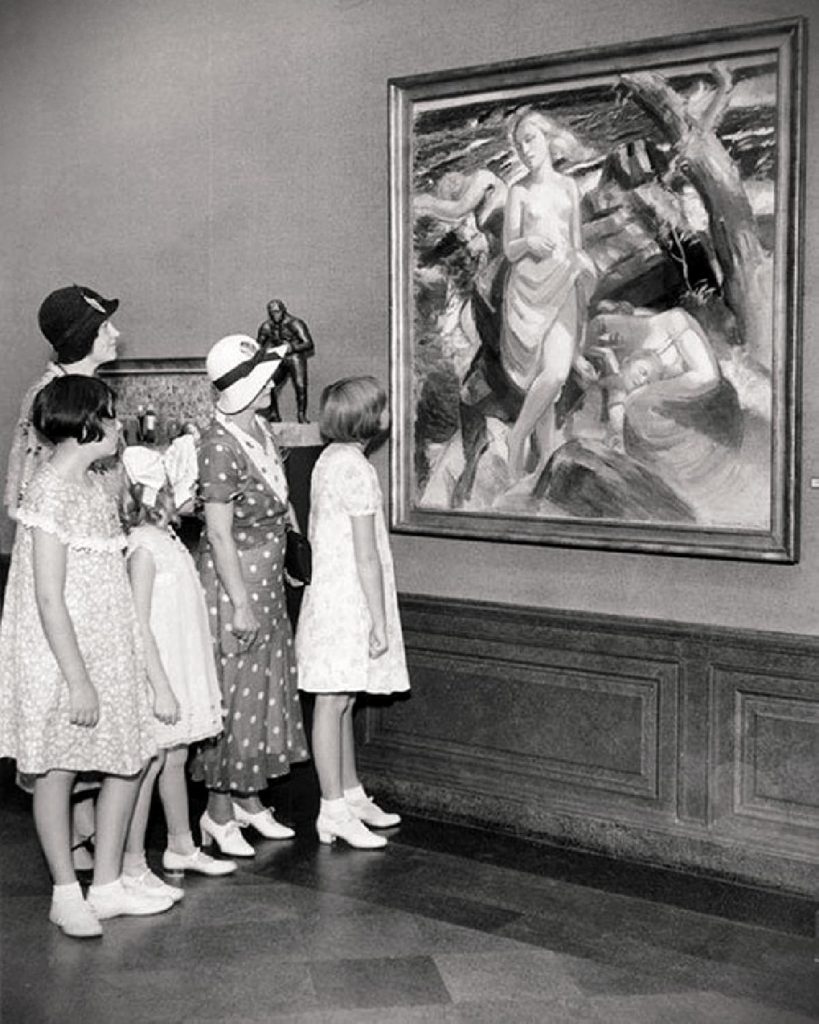
The art competitions were grouped into five categories: architecture, painting, literature, music, and sculpture. The artist himself did not need to be present. For example, in this Summer Olympic Games, David Wallin (1876-1957), a Swedish artist, won a gold medal for his painting At the Seaside of Arild. It must have been heaven for art and sports lovers to see both “spectacles” in one place.
The 1936 Berlin Games was the first Olympic competition to use telex transmissions of results. Zeppelins quickly transported newsreel footage to other European cities. The Games, televised for the first time, were transmitted by the closed-circuit to specially equipped theaters in Berlin.
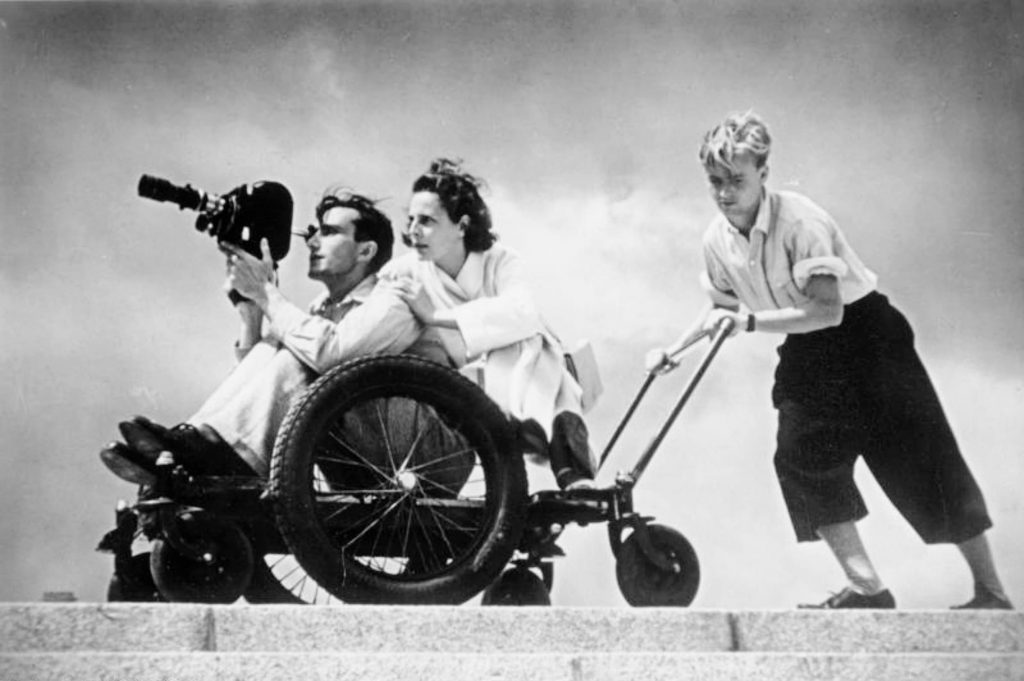
In 1938, Leni Riefenstahl (1902-2003) directed Olympia, a Nazi propaganda sports film, which documented the 1936 Summer Olympics. She used unusual camera angles, smash cuts, and extreme close-ups. At that time, these techniques were considered groundbreaking. Therefore, many people admired the film but, due to its political context, it was controversial. Later, it appeared on many lists of the greatest films of all time.
Due to the technology, Jesse Owens (1913-1980), an American track and field athlete, alongside many other athletes, could demonstrate their achievements to a broader audience. Letting his feet spend as little time on the ground as possible, Owens won four gold medals: 100 meters, long jump, 200 meters, and four 100-meter relays. Thus, he made a blow to Adolf Hitler’s intention to use the Olympics to demonstrate Aryan superiority.
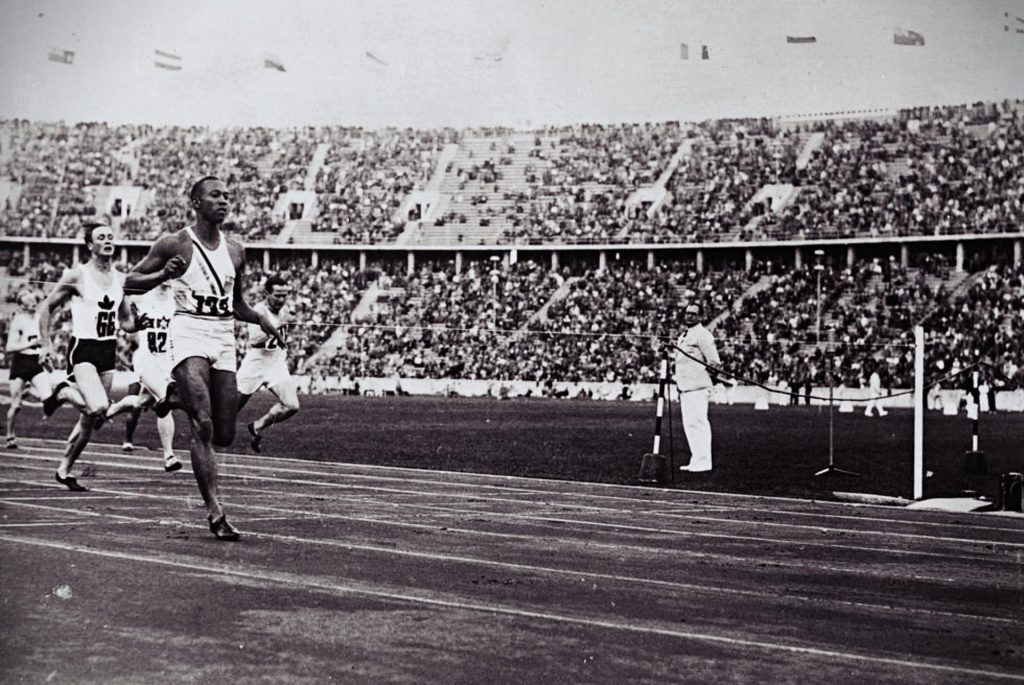
When it was time to congratulate competitors, Adolf Hitler shook hands with the German victors only. However, by the second day of the competition, when Owens won the 100-meter final, Hitler had decided to no longer publicly congratulate any of the athletes.
Unfortunately, after Owens returned home from the Summer Olympic Games with four gold medals, he faced discrimination and difficulty finding work. He had to take on menial jobs as a gas station attendant, playground janitor, and manager of a dry cleaning firm. But now, he is considered one of the greatest athletes of the 20th century.
Larisa Latynina (born 1934), a former Soviet artistic gymnast, competed at three Olympic games. Throughout these Games, she won 18 medals, which was a record, until 2012 when Michael Phelps surpassed it. Latynina holds the record for the most Olympic gold medals by a gymnast, male or female, with nine.
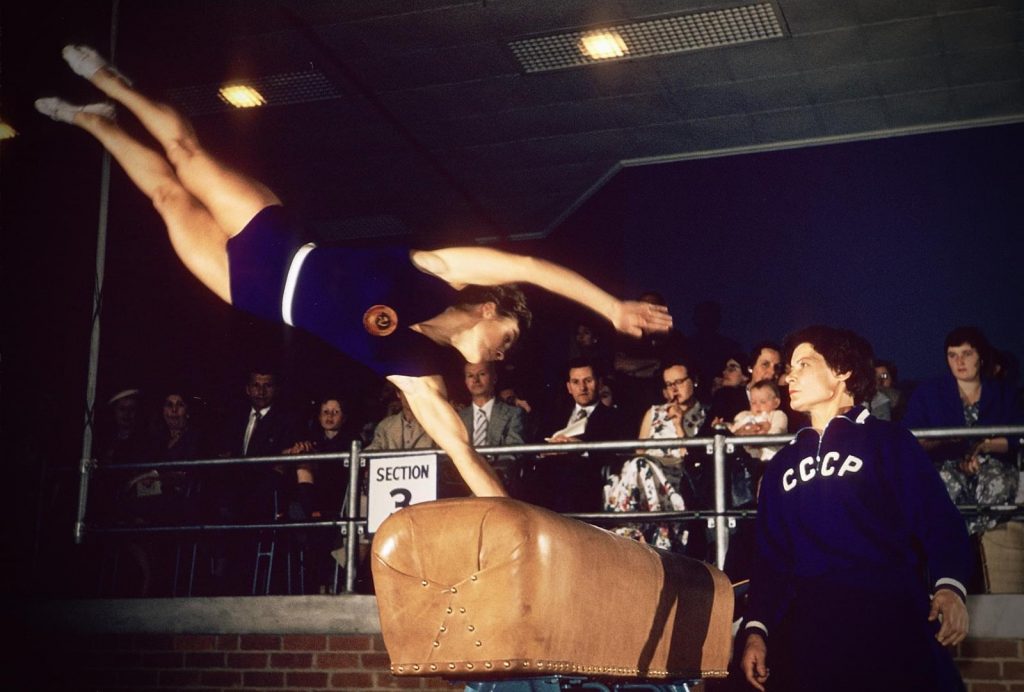
She first practiced ballet but turned to gymnastics after her choreographer moved out of the city. At the age of 19, she debuted internationally at the 1954 Rome World Championships, winning the gold medal in the team competition. In 1956, she competed at the Summer Olympic Games, and in the all-around event, she fought off stiff competition to win gold. You can see her flawless performance in action. She finished first in the vault, second in the uneven bars and the exercise on the floor, and fourth in the balancing beam.
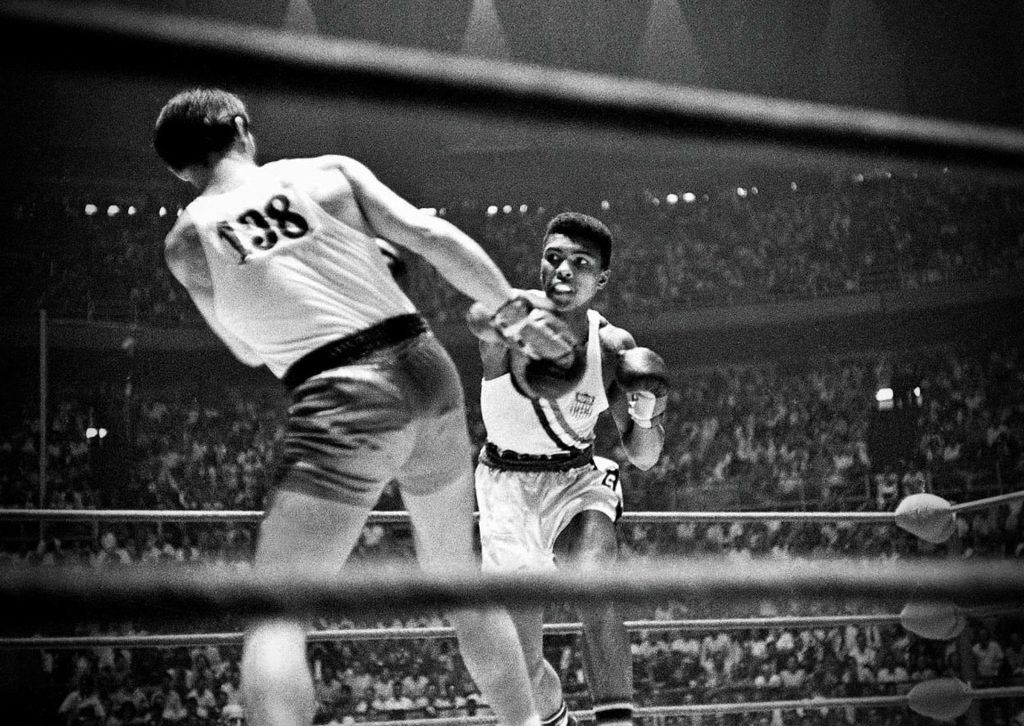
In 1960, at the Summer Olympics in Rome, a dynamic, strong, and American boxer emerged. He fought his way to Rome through many amateur victories; this was handsome and skinny heavyweight Cassius Marcellus Clay Jr. (1942-2016). In the 1960s, he converted to Islam, and we know him under the name Muhammad Ali. At 18, he took home a gold medal for his winning match against Zbigniew Pietrzykowski (1934-2014), a Polish Olympic Games medalist.
Muhammad Ali is also remembered for his tongue-in-cheek approach that amused crowds. Nicknamed The Greatest, he befriended many athletes, teased and laughed with them. He might be sports’ first hip-hop poet.
“It’ll be a killa and a chilla and a thrilla when I get the gorilla in Manila.”
Muhammad Ali before his bout with Joe Frazier, 1975.

The Thrilla in Manila was the third and final boxing match between Muhammad Ali and Joe Frazier (1944-2011), an American boxer. Ali became an icon of the counterculture after he refused to be drafted into the military and objected to the Vietnam War. He was also a high-profile figure of racial pride for African Americans during the civil rights movement and throughout his career.
Inspired by practices from ancient times, the Olympic torch relays the flame – from Olympia, Greece – to the site of the Games. It was first performed at the 1936 Summer Olympics and has taken place before every game since. It signals the start of the Olympic Games and transmits a message of peace and friendship along its route.
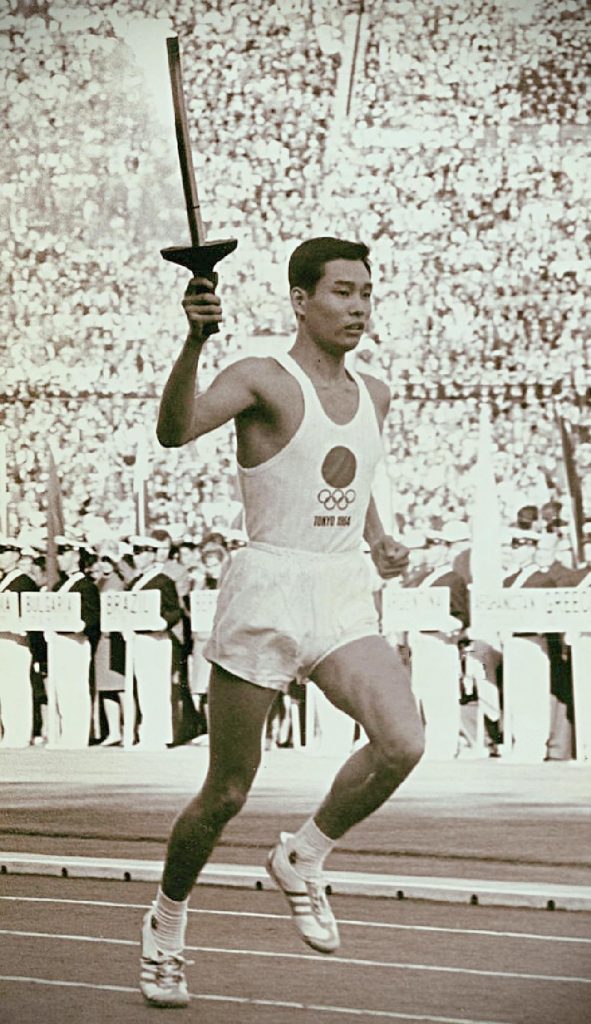
At the time of the 1964 Olympics, Yoshinori Sakai (1945-2014) was a member of Waseda University’s running club. He became the Olympic flame torchbearer who lit the cauldron at the Games in Tokyo. Although never actually competing in any events at the Olympics, he did win gold and silver medals, running at the 1966 Asian Games. Later, he joined the TV station and worked as a journalist in news and sports.
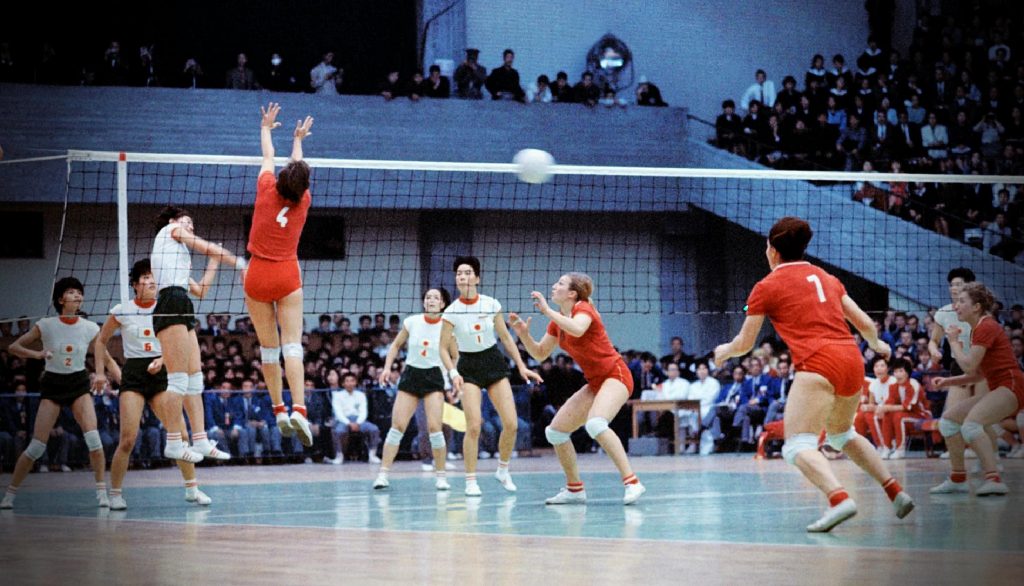
Hosting its first Olympics in 1964, Japan was eager to prove itself to the world. It was a moment to celebrate Japan’s progress. During this time, Oriental Witches emerged in Japan. A group of Osaka textile workers was transformed into a fiercely competitive volleyball team. They got this nickname after achieving 24 consecutive victories against other volleyball national teams on the expedition to Europe. After that, they stunningly defeated the heavily favored Soviet Union and won a gold medal at the Olympics.
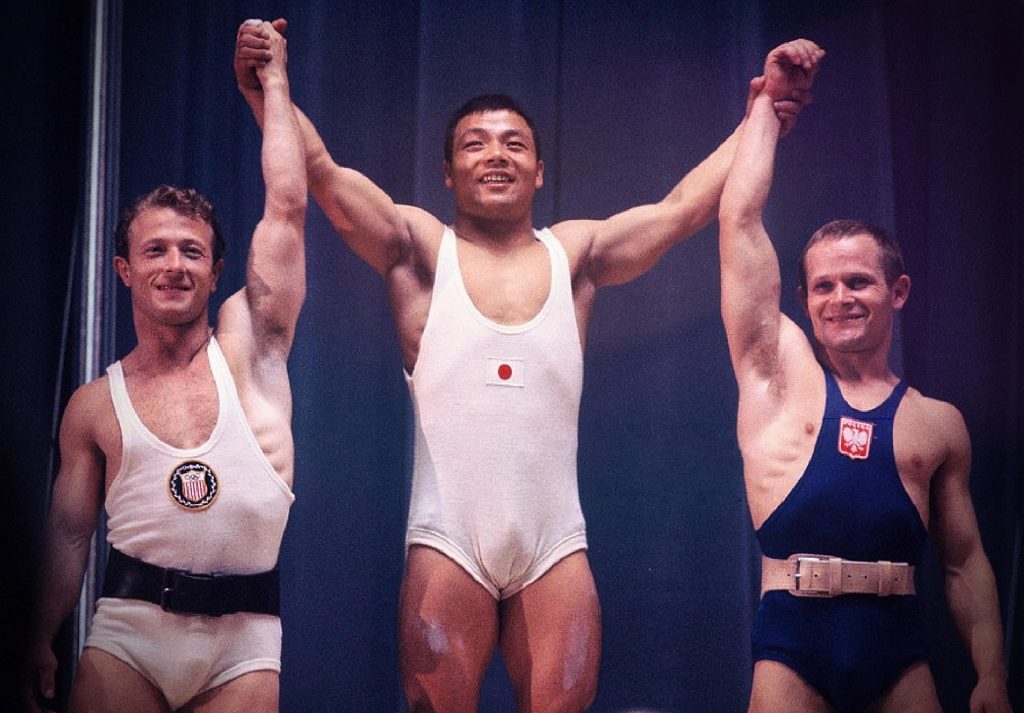
The Olympic Games, like other international competitions, are magical events. It draws people from different nations into one place and can unite them. Yoshinobu Miyake (born 1939), a Japanese weightlifter, won a gold medal at the 1964 Summer Olympics in Tokyo. However, basking in the glory, he shared this joyful moment with other medalists, Isaac Berger and Mieczysław Nowak.
The Summer Olympics in Mexico City begins. Dick Fosbury (born 1947), an American high jumper, springs from the pad like some great rocket lifting off. But first, he meditates, worries, and psyches himself. Fosbury ponders for a while before approaching the bar. He flops, landing on his shoulder blades.
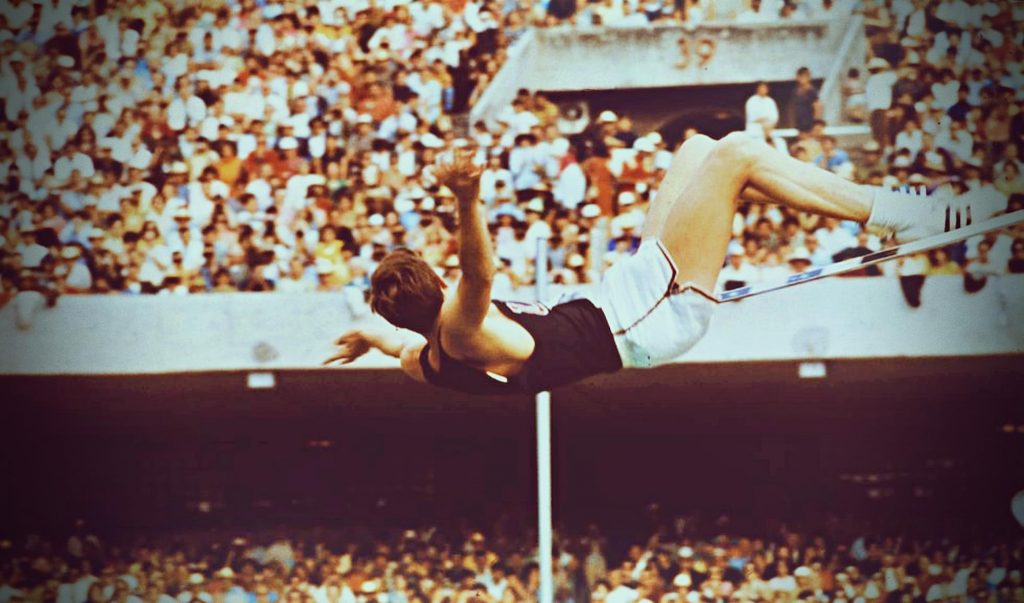
When he was a schoolboy, Fosbury discovered that by lowering his center of gravity by stretching out on his back he could jump higher. Over the years, he perfected his technique and, despite skepticism from coaches, won a gold medal at the 1968 Summer Olympics. Now we know this revolutionized high jump as the Fosbury Flop. Within a decade of his gold medal, the scissors kick had been rendered old-fashioned. The great majority of Olympic high jumpers were using Fosbury’s technique.
The Seoul 1988 Olympic Games were full of surprises. One billion people worldwide watched in awe a skydiving team that jumped out of a plane and formed the world-famous Olympic rings high above the Stadium. Then, a stuntman attempted to parachute into the Olympic Stadium.
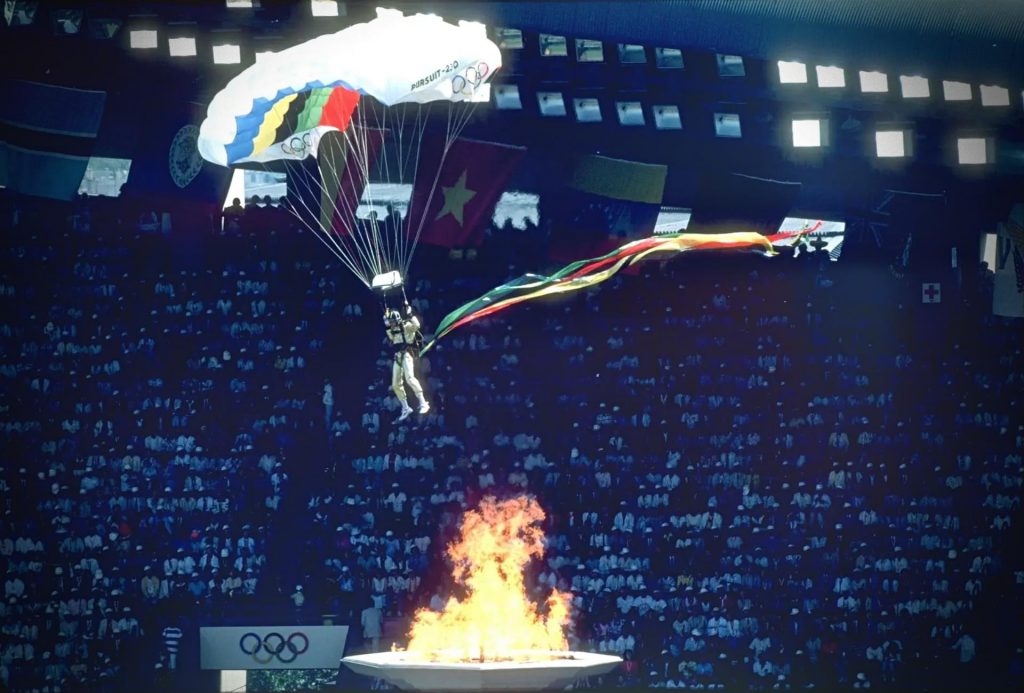
Florence Griffith Joyner (1959-1998), an American athlete, set world records for the 100-meter and 200-meter sprints. At this Olympics, she set a new world record in the 100-meter sprint. She is still the fastest woman of all time. Beyond her talent in running, Griffith-Joyner was known for her bold fashion choices. Her fans know her for lime green or purple running suits with white bikini bottoms and embellished with lightning bolts.
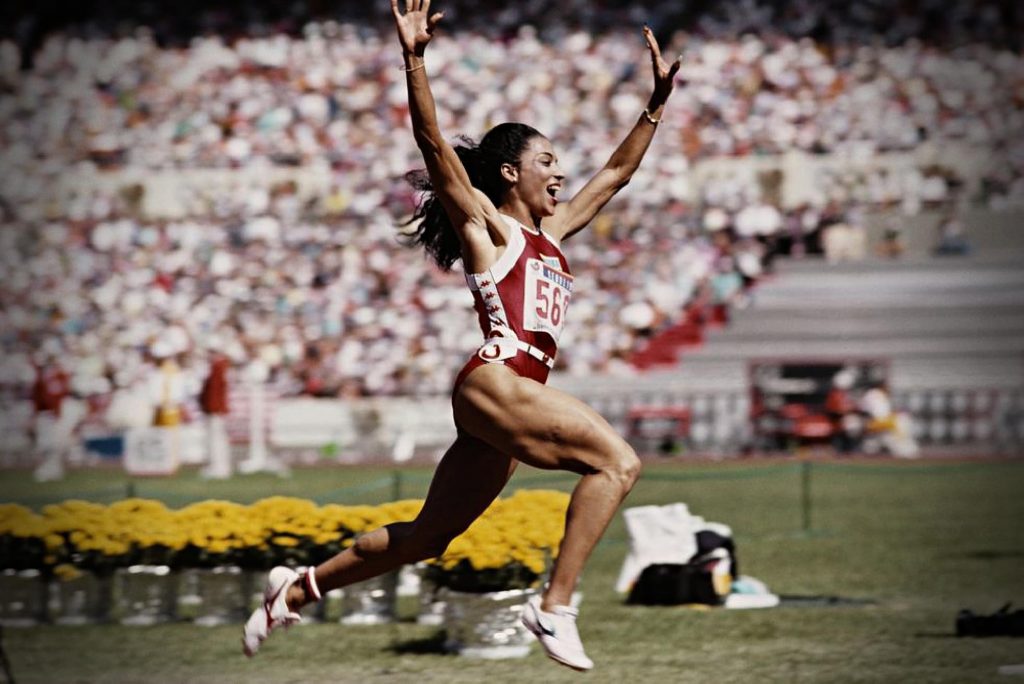
For example, in the Olympic Games, Griffith Joyner had long nails painted red, white, blue, and gold. Many sprinters avoided accessories that might slow them down. However, she kept her hair long and wore jewelry while competing. Furthermore, Flo-Jo designed many of her outfits herself and preferred unconventional looks.
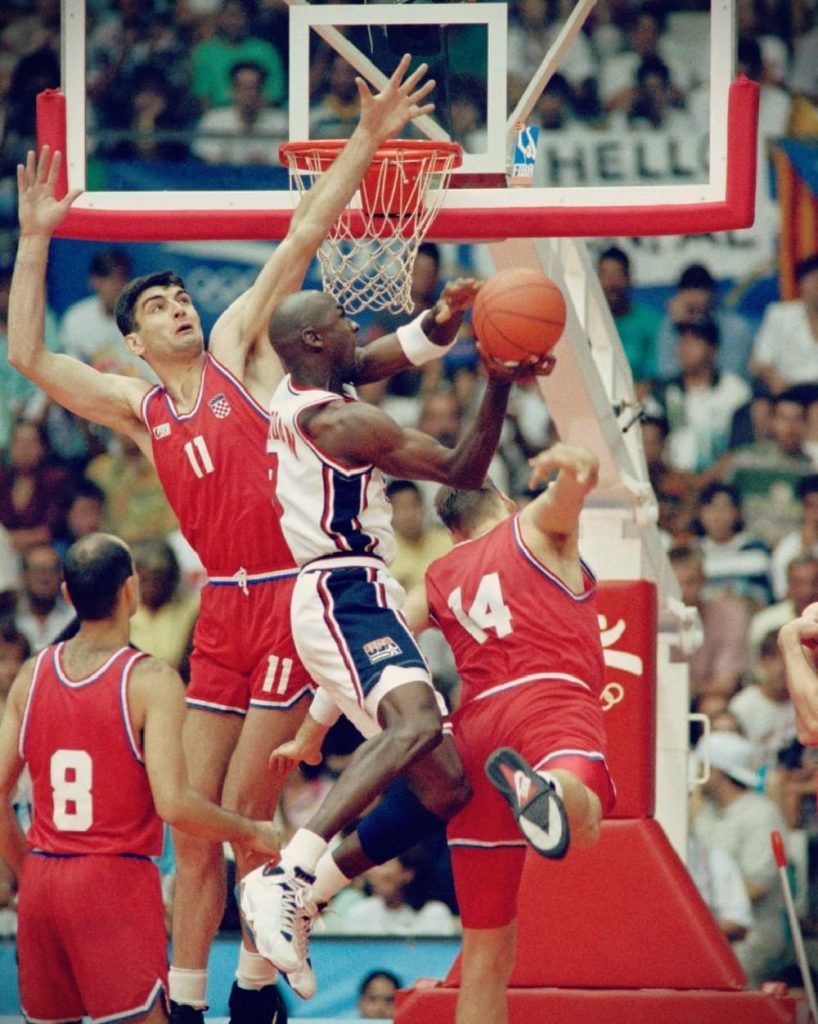
Before the 1992 Olympics, the rules prevented NBA players from participating in Olympic tournaments, and only amateurs were eligible for the United States. In contrast, other countries used their best players from their domestic professional leagues. Consequently, the Americans lost to the Soviet team and settled for bronze in the 1988 Summer Olympics.
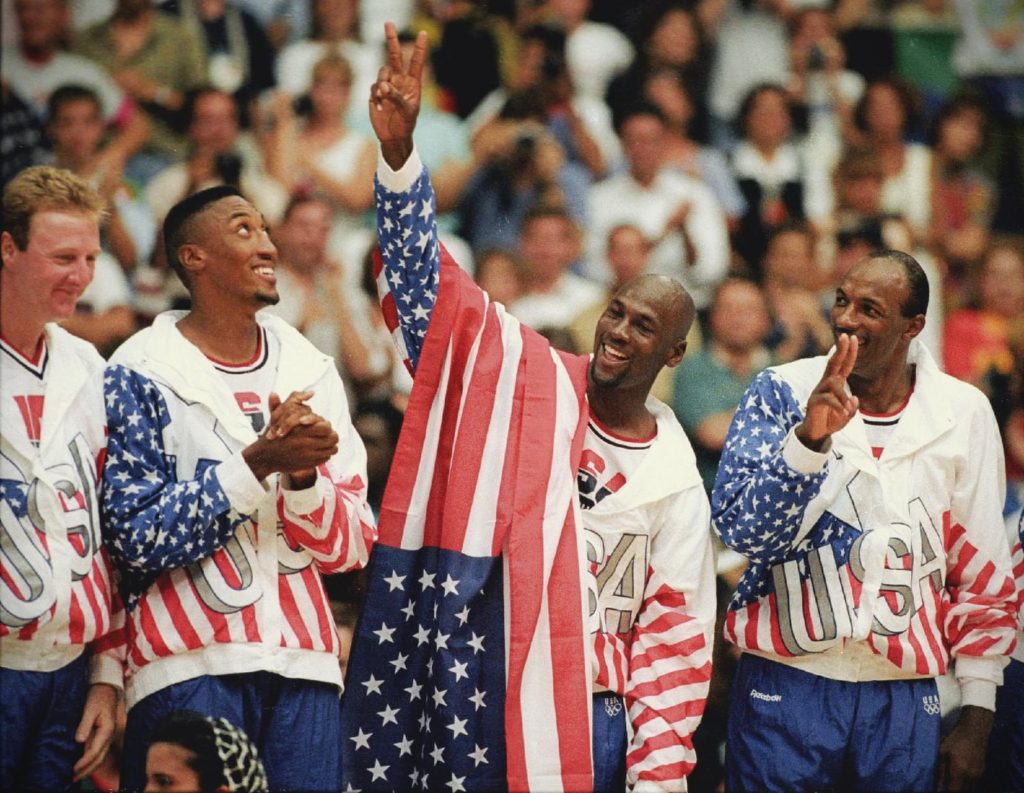
A year later, the International Basketball Federation changed the rules and allowed NBA players to participate. At the 1992 Summer Olympics, the team defeated its opponents by an average of 44 points and won the gold medal against Croatia. Michael Jordan, Magic Johnson, Karl Malone, Charles Barkley, and Patrick Ewing were among the members of the “Dream Team.” They became popular and helped contribute to the globalization of basketball in the NBA.
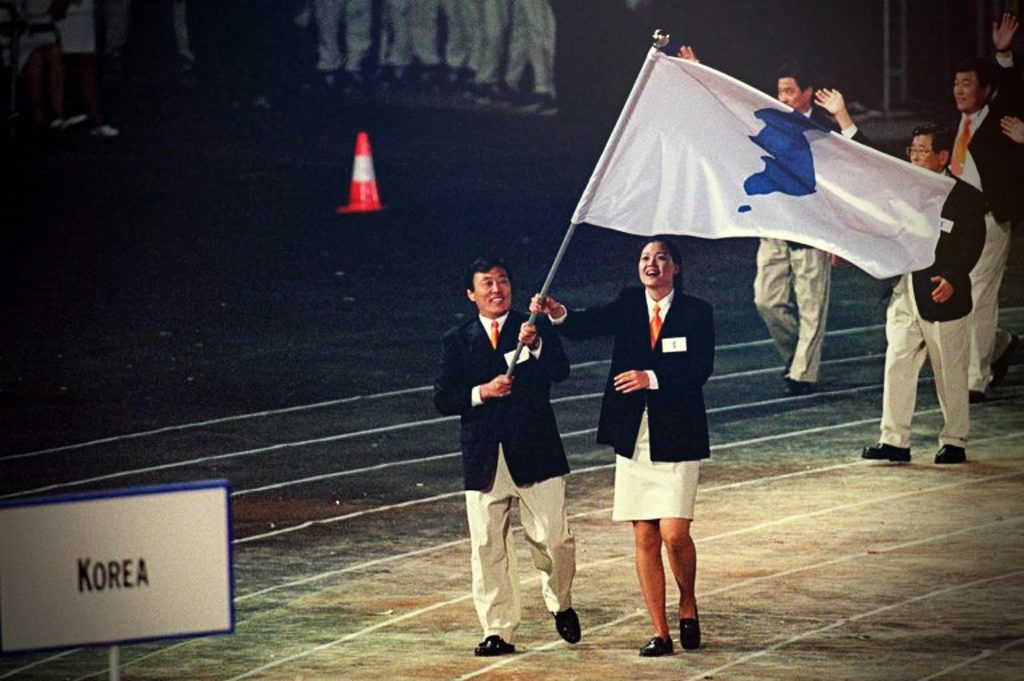
Under the magic spell of the Olympic Games, a memorable event happened at another opening ceremony in Sydney. We saw the North and South Korean athletes jubilantly marching together under the specially designed unification flag. It featured a white background flag with a blue map of the Korean Peninsula. However, their national teams competed separately in the Olympics.
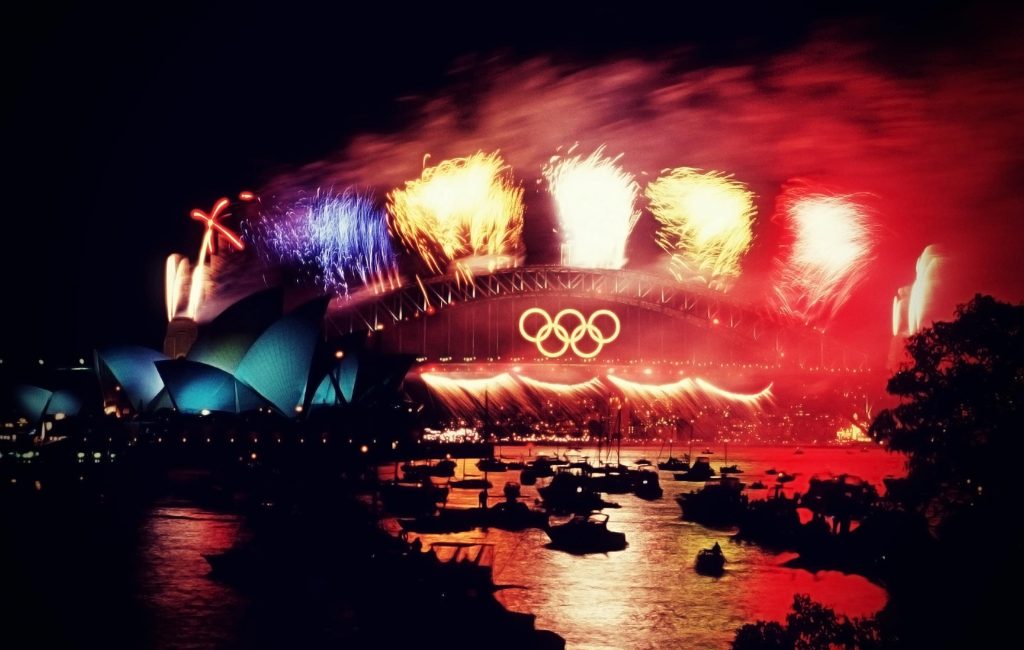
At the closing ceremony, the spirit of the Olympic Games flew over the Sydney Harbour Bridge. You can see the bridge erupting with fireworks, the peacefully docked boats, and spectators cheering across the globe. It was, at the time, the largest fireworks display staged in the world and required the work of five different pyrotechnic companies.
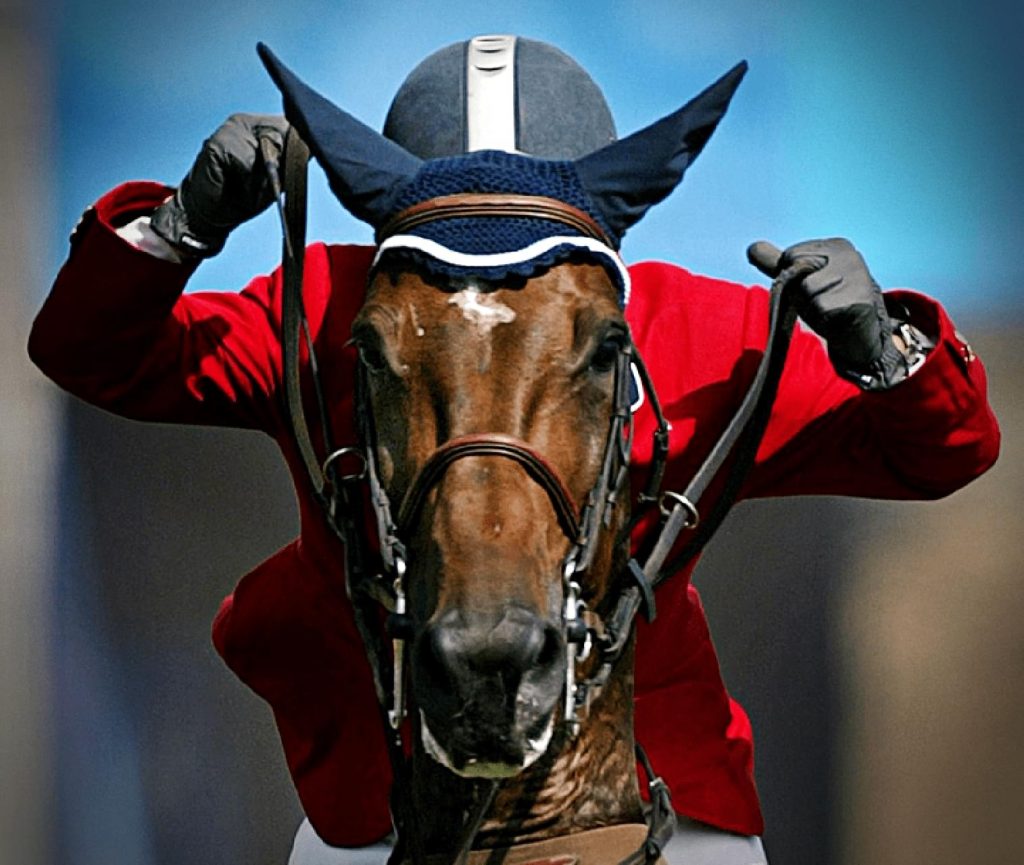
Anything can happen at the Olympic Games. It was the moment when all things perfectly align that an ordinary horse transforms itself into a magical one. When Caren Firouz, a photographer, captured Federico Enrique Sztyrle, an Argentine equestrian he had an eye-level position on the horses. As Federico Sztyrle rode Who Knows Lilly over the jumps, the photographer seized the opportunity when the helmet, ears, and arms fell into place perfectly.
Neda Shahsavari (born 1986), an Iranian table tennis player, qualified to compete in the Summer Olympics. She became the first Iranian woman to represent the country in table tennis at the Games. Neda Shahsavari was drawn to ping pong since she was 11 years old. Eventually, her parents got her a ping pong table.
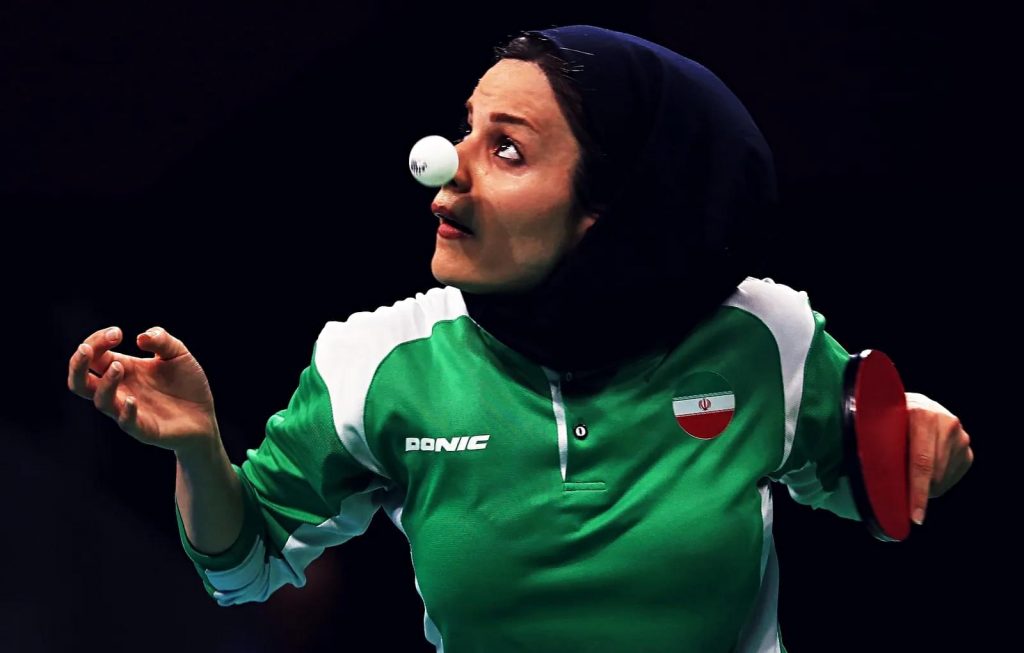
There is a mandatory Islamic dress code in Iran. It requires that all women should clothe their bodies from head to toe. Women athletes must also adhere to these rules if they want to compete nationally and internationally. But this does not bother Neda as she concentrates on the game as you can tell by this insightful photograph.
Michael Phelps (born 1985), an American former swimmer, has an unprecedented record of 28 Olympic medals. It is mind-boggling to think that a athlete can have so many medals. When you come to think of it, even one medal at the Olympic Games is a lifetime achievement.
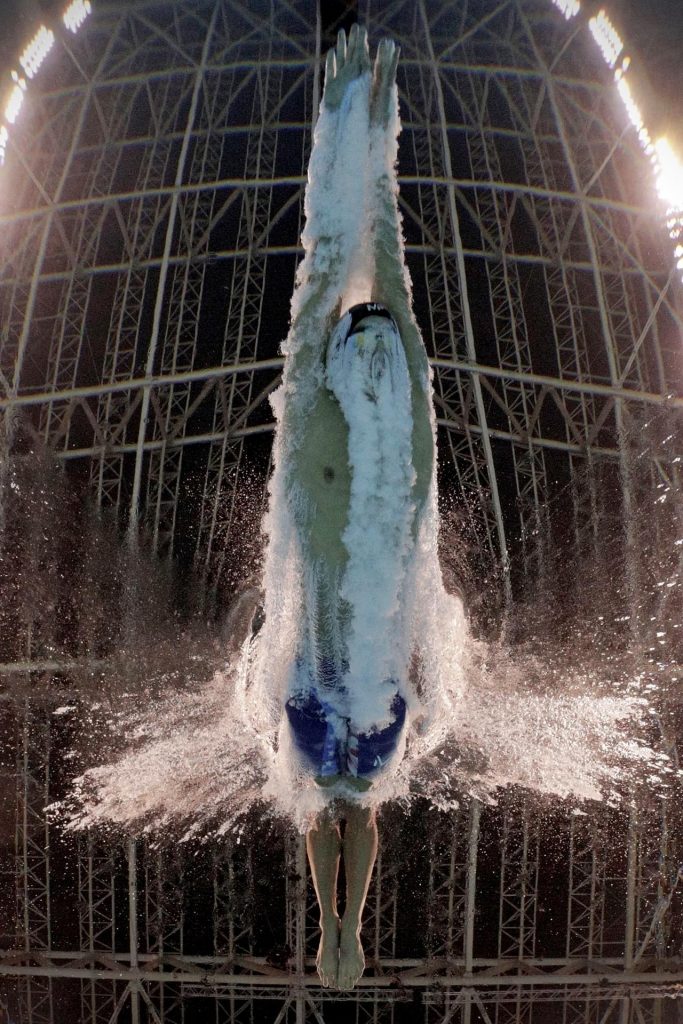
It all started after his mother wanted Michael Phelps to learn how to swim. But he fell in love with the sport and decided to swim as it gave him an outlet for his energy. At 15, he set the record and won a gold medal at the World Championships in 2001. Fast forward, Phelps wins eight gold medals at the Olympic Games in Beijing.
It takes hard work, training, dedication, and talent to win. But with so many athletes wanting to win and having these qualities, what is Michael Phelps’ secret ingredient?
“Records are always made to be broken no matter what they are…Anybody can do anything that they set their mind to.”
Michael Phelps after winning his 7th gold medal, 2008.
As a teenager, Phelps idolized Ian Thorpe and modeled his public image after the Australian swimmer. Thorpe initially said that it would be highly unlikely for Phelps to win eight gold medals at the 2008 Summer Olympics. But Phelps taped the words to his locker during the Games and used the remarks as motivation.
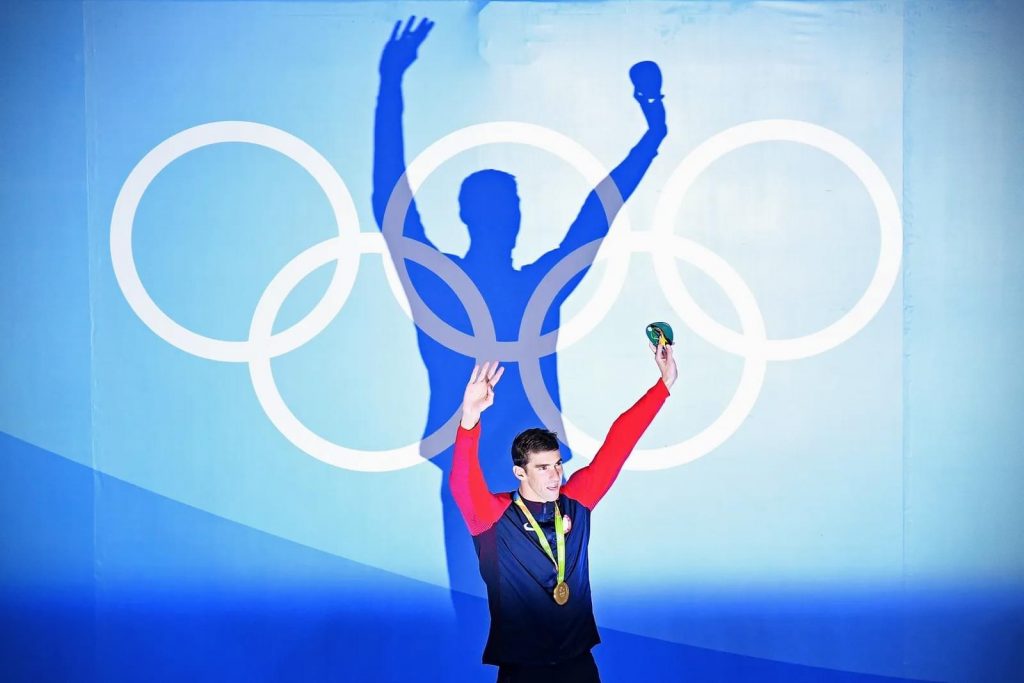
He showed us that with the right kind of mindset, dedication, and hard work, you can achieve anything you set for yourself in life. And the Olympics is the perfect event to prove the point. This is Michael Phelps’ way, and people in Baltimore knew that. A street in his hometown was renamed The Michael Phelps Way in 2004.
Tokyo was selected as the host city for the 2020 Summer Olympics. However, because of the COVID-19 pandemic, the organizers postponed the Games. They will take place at the end of July and the beginning of August 2021 in Tokyo, Japan. Today we know Tokyo as an industrialized city, a sort of futuristic metropolis with skyscrapers and robots. It is hard to imagine that it had a mere one hundred thatch-roofed cottages at the end of the 16th century.

It is no surprise that Miraitowa became the mascot of Tokyo 2020. Having the Japanese words “future” and “eternity” in its name, it embodies “both old tradition and innovation.” The character is very athletic and has a strong sense of justice. It has the cool ability to teleport anywhere instantly.

Robotic automatons of Miraitowa are planned to be included during the Games. The robots’ eyes can change to display hearts, along with other emotions, and their multiple joints and arms can be remotely controlled. Cameras allow the robots to recognize and respond to facial expressions.

Sport has the power to change the world. At Olympic Games, every athlete can show their potential, achieve their dreams, and bring out the best in others. Despite many obstacles and setbacks, we hope that Tokyo 2020 Summer Olympic Games will be successful and hope that it will be all plain sailing.
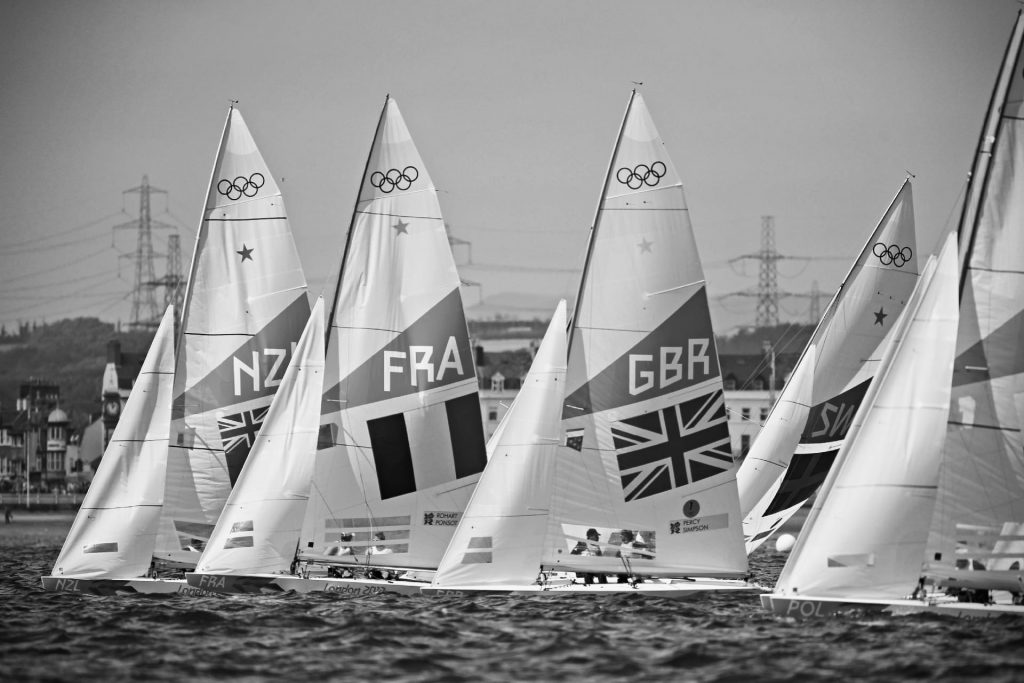
DailyArt Magazine needs your support. Every contribution, however big or small, is very valuable for our future. Thanks to it, we will be able to sustain and grow the Magazine. Thank you for your help!